SEEDIG annual meetings are planned in an open, inclusive and transparent manner, with input from the SEEDIG community, and under the overall coordination of the SEEDIG Executive Committee and a dedicated Programme Committee.
The planning process starts with a call for issues, through which the community is invited to indicate what topics they would like to see discussed at the meeting. A Programme Committee (formed following a public call for volunteers) reviews the proposed topics and prepares a draft programme. This draft is then further revised and finalised through additional rounds of public consultations.
Originally planned to be held in Chisinau (Moldova), SEEDIG 6 has shifted to an online format. The Executive Committee has contracted DiploFoundation to assist with the planning process and running of the meeting, given the organisation’s extensive experience in organising online events.
‘What topics should we talk about at SEEDIG 6? Which Internet governance and digital policy issues are of high interest for stakeholders in SEE+? ‘ We invited the community to help us find answers to these questions by responding to our call for issues. In response to this call, we received 83 suggestions for topics to be discussed in Moldova in May 2020.
Read more about the proposals.
The community was invited to review the draft programme and submit comments and suggestions for improvement.
The Programme Committee and the Executive Committee hosted an online meeting to discuss the next steps in the SEEDIG 6 planning process. A summary of the discussions is available.
Proposals submitted in response to the call for issues were compiled and made publicly available.
Two online public planning meetings were held as part of the planning process for SEEDIG 6. Read the summary report reflecting the discussions.
The final programme outline was built based on the draft programme and the comments received during the public comment period.
When a decision was made to move SEEDIG 6 to an online format, the SEEDIG community and SEEDIG partners were again invited to contribute ideas and suggestions on the meeting structure and format.
A Programme Committee (PC) was formed (following a call for volunteers) to shape the programme for SEEDIG 6.
The Programme Committee built a draft programme outline for SEEDIG 6, based on the submitted proposals and the discussions held at the online planning meeting(s).
A new round of public consultations was held inviting the SEEDIG community and SEEDIG partners to submit suggestions for key participants and session formats.
Online participants will discuss Internet governance and digital policy issues from a SEE+ perspective, and will develop the SEEDIG Messages.
Stakeholder Engagement Director | ICANN | Italy/Portugal

Andrea's responsibilities include working on ICANN's engagement with the European governments, Internet communities, the EU bodies, as well as the European-based IGOs. Prior to working at ICANN, Andrea served as Policy and Advocacy Manager for the International Federation of Libraries Association and Institutions (IFLA) in The Hague, Netherlands, where he strengthened IFLA relationship with the UN systems and libraries' contribution to the UN Millennium Development Goals. He was also an Associate Expert at UNESCO's Knowledge Societies Division, Communication and Information Sector in Paris, France, where he worked at the Organization's involvement in WSIS, Internet Governance, and negotiated the 2009 partnership agreement between UNESCO and ICANN.
LL.M candidate | University of Pennsylvania Carey Law School | Armenia
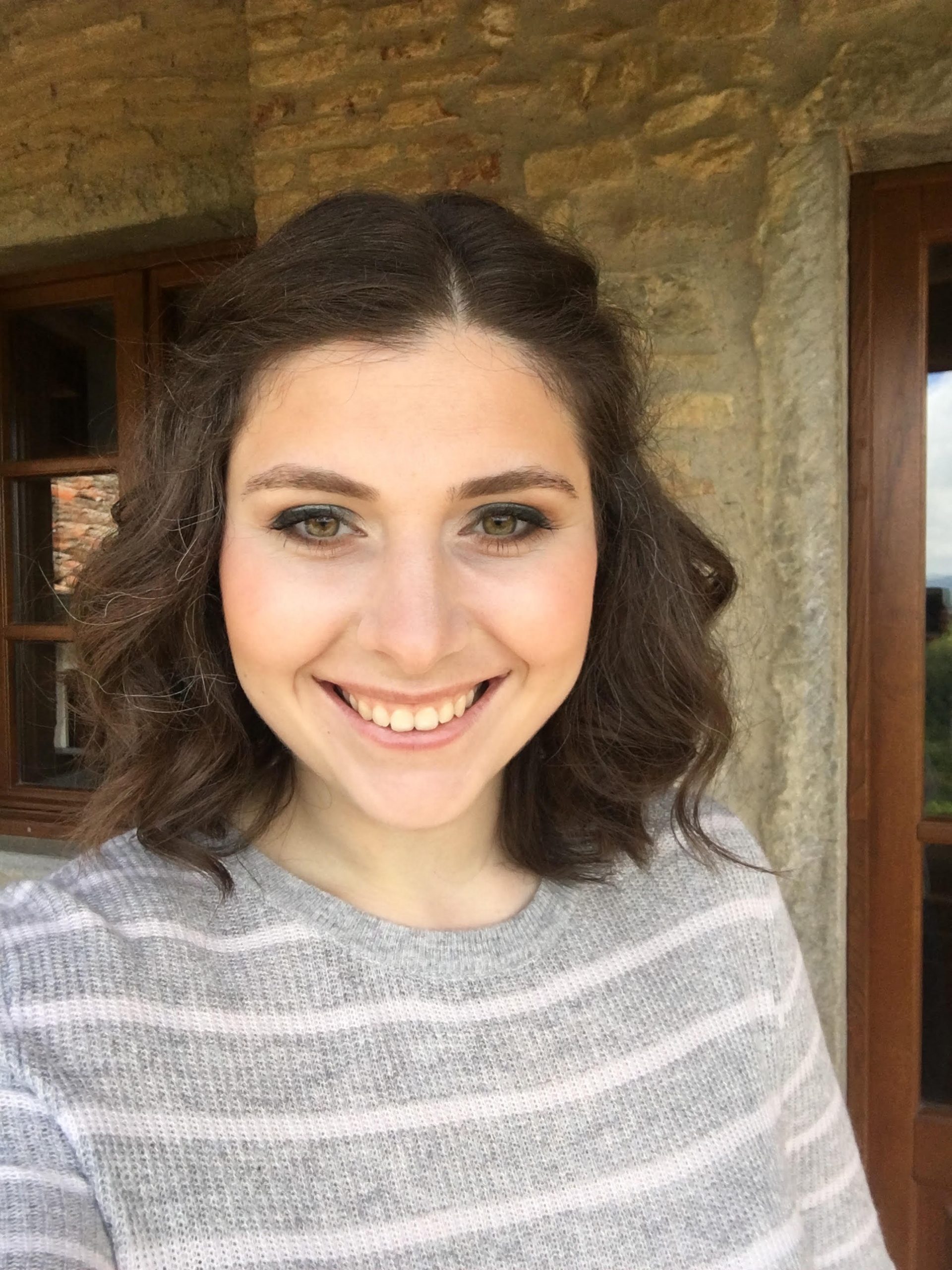
Meri Baghdasaryan is a human rights attorney from Armenia. She is a national consultant with the Council of Europe and an LL.M Candidate at University of Pennsylvania Carey Law School (USA). She also served as a human rights junior expert for UNDP Armenia. Meri holds an LL.M degree in Human rights from the Central European University (Budapest, Hungary). She has been involved in the Internet governance (IG) ecosystem since 2016, focused on issues related to data protection, freedom of speech and youth participation in IG.
Executive Director | Moldovan National Association of ICT Companies | Moldova (PC Chair)
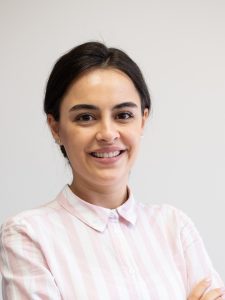
Marina Bzovîi is the Executive Director of the Moldovan National Association of ICT Companies, an umbrella association uniting 43 companies, established in 2006 it has become a major player in the associative sector on the Moldovan market.
Marina is a legal professional with a solid academic formation specializing in civil and commercial law with a keen interest in data protection, e-commerce, IT and communications law. She previously worked as a Junior Associate for one of the top law firms in Chisinau. As a representative of ATIC she was involved in the discussions with Public Authorities related to legal barriers and draft laws affecting the ICT sector, including the draft law on Data Protection. Within the Association, Marina strengthened the cooperation between EuroISPA and ATIC, stimulating and promoting the knowledge on strategy, analysis of political and legislative documents on future European legislation related to Data Protection, E-commerce, Intermediary Liability, Copyright, E-evidence and Net neutrality.
Advisor | Ministry of Justice of Albania | Albania
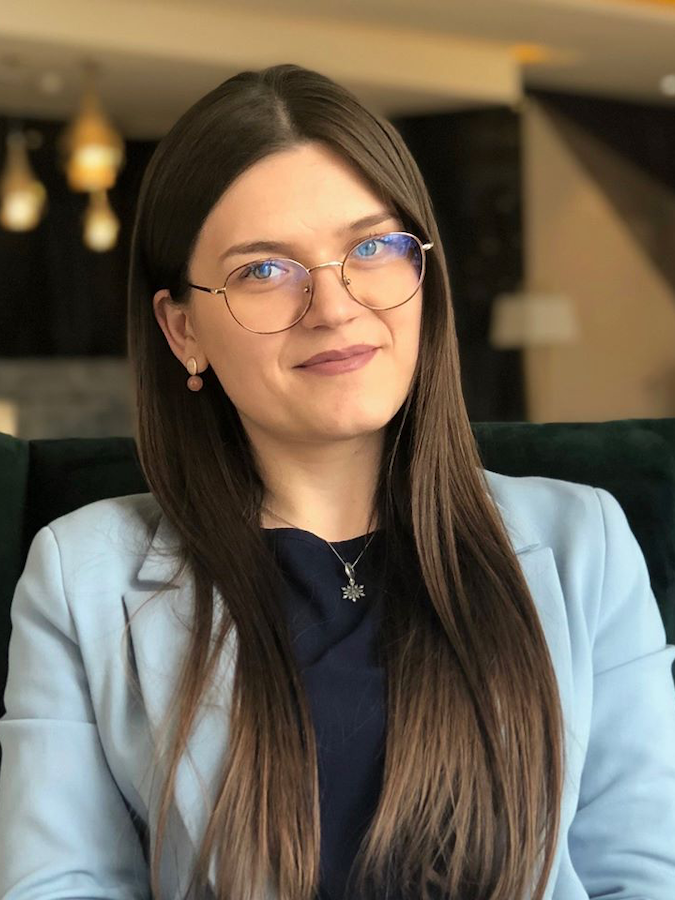
Desara Dushi is currently working as an advisor to the Minister of Justice of Albania as part of the LEAD Albania Fellowship program. She is also an assistant professor at the Law Department of Epoka University. In early 2020, she joined the Executive Committee of SEEDIG.
Desara holds a Double PhD Degree in Law, Science and Technology from the University of Bologna and University of Luxembourg. She is specialized in criminal justice, ICT law, cybercrime, human rights, online child protection, and Internet Governance. Desara has been an ICANN Fellow twice and has also served as member of the NextGen@ICANN Selection Committee.
Vice-Dean | Academy of Public Administration | Azerbaijan
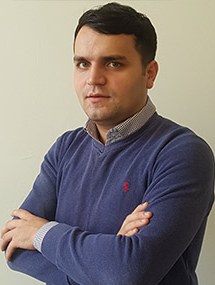
Sarkhanbay is Vice-Dean at the Academy of Public Administration in Azerbaijan. An Experienced project manager with a demonstrated history of working both in the government and NGOs field. Skilled in analytical research, lecturer of political sciences and PhD student focused on conflict management and international relations. Professional in public administration, key dimensions of e-governance for sustainable development, also dealing with the full spectrum of student affairs including recruitment, admissions, student progress reviews, examinations, academic records and graduation.
External Relations Officer | RIPE Network Coordination Centre (RIPE NCC)

Gergana helps lead the RIPE NCC's engagement with a broad range of stakeholders, including the RIPE NCC membership, the RIPE community, government, law enforcement and other Internet stakeholders. In addition, Gergana is in charge of the academic engagement at RIPE NCC and coordinates the RIPE Academic Cooperation Initiative (RACI), which funded many students and researchers to present their work at RIPE NCC’s events. Gergana is also very involved in the Internet Governance field – contributing to meetings on a global, regional and national level, organising and delivering webinars and presentations. Previously, Gergana organised the RIPE Meeting, regional ENOG and SEEmeetings and helped build the local communities there.
Lecturer | University “Aleksander Moisiu” | Albania

Oliana Sula is a lecturer and researcher at the Departement of Management, Faculty of Business at the University “Aleksandër Moisiu” Durrës, in Durrës, Albania. She has recently finalised her PhD in Management at Estonian Business School in Tallinn, Estonia. Her previous educational background is from France. Her research interests are social media, youth entrepreneurship, social innovation, digital literacy, digital inclusion, cybersecurity education, youth policies, youth entrepreneurial culture focusing more in South East Europe and Latin America. She is part of different initiatives about Internet Governance at regional and European level. Her hobbies are nature, travelling, literature, spirituality, fitness and fashion design.
Coordinator & Founder | Digital Citizens | Romania

Veronica is the founder of the first Romanian Digital Think-Tank – Digital Citizens Romania – connecting Romanian digital innovators and everyday digital citizens with the European and Transatlantic opportunities and debates.
She is a professional with more than 14 years experience, working in both national and international contexts, in areas related to digital transformation, innovation, education and multi-stakeholder cooperation.
In the framework of the Romanian Presidency to the EU Council, Veronica led the consultations with civil society on digital priorities, bringing together representatives of public institutions, tech industry, academia and everyday digital citizens.
Co-founder | IGF MKD | North Macedonia
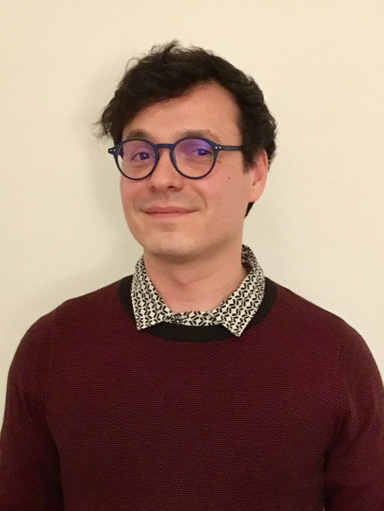
Predrag Tasevki holds a Master of Science in Engineering in the field of Cyber Security from TTÜ Estonia. Then he obtained a Post-Master degree (Diplôme d'Ingénieur de specialisation) in Security in Computer Systems and Communications from Elite school EURECOM in France. Currently based in Berlin - Germany and working as an ISO (Information Security Officer) at eyeo GmbH.
His objective research interests are in the field of cyber security, cyber defence, cloud security, security awareness, risk assessment, identity/risk management, cyber risk, cyber insurance, awareness-raising, socio-technical aspects, compliance, privacy, data scientist and hacktivist and so on.
Predrag is an author of two paperback books, as well as being published in international conferences, magazines, journals and he is a blogger at ResPublica. Moreover, he is a Co-Founder of Internet Governance Forum Macedonia (IGF-MKD) and North Macedonian representative of DiploFoundation, mentor at Startup - Academy for Young Entrepreneurs, and he is a Microsoft Certified Trainer (MCT), Senior Scrum Master, Certified Project Manager and a Lead/External Auditor for ISMS.
Today, he is an ISO and Subject-matter expert (SME) in Cloud Security and he is based in Berlin.
The SEEDIG PC is formed following a public call for volunteers. For efficiency purposes, the group is composed of up to 10 members. If more volunteers express interest, the SEEDIG Executive Committee (EC) will appoint PC members from among the volunteers, taking into account the need to create a balanced committee, with overall expertise and experience required to prepare a balanced and relevant programme, in accordance with SEEDIG principles (e.g. Session principles, Programme planning process etc.).
The PC will work on shaping the programme for SEEDIG 6, in close coordination with the EC and with the involvement of the broader SEEDIG community. The overall responsibility for ensuring that the meeting programme is aligned with SEEDIG’s mission, vision and principles rests with the EC.
Members of the PC are expected to, inter alia:
Review the proposals submitted for SEEDIG 6, discuss them with the SEEDIG community in at least one online planning meeting, and elaborate a draft programme for SEEDIG 6.
Publish the draft programme for public comment. Then incorporate comments submitted during the public consultation period(s) into the final programme, to the largest extent possible.
Define the structure of the programme, considering past SEEDIG experiences as well as the need to adapt the meeting to the needs and realities of the region.
Shape and define sessions and other elements included in the SEEDIG 6 programme, in terms of title, focus, format, key participants, moderators etc.
Make sure that the overall programme is cohesive, consistent, focused and relevant. For example, the programme should include topics of interest for as many stakeholder groups as possible (especially those usually less represented at SEEDIG meetings), and the discussions should be focused and relevant for the SEE+ region.
Develop mechanisms (such as org teams for different sessions, public consultations, online meetings etc.) to allow the SEEDIG community to contribute to the programme planning process in an open, inclusive, efficient, and effective manner.
Actively participate in building the programme, including through participation in online meetings, reviews, drafting of session descriptions, identification of possible key participants and moderators etc.
Strive to make decisions on the basis of consensus, to the largest extent possible. Where consensus is not possible, then a formal vote may be held; in the case of voting, decisions shall be taken by simple majority.
Be team players, impartial in their judgement, honest and open to discussion.
PC members elect a Chair who coordinates the work of the PC: scheduling and chairing meetings, ensuring communication with the SEEDIG community and the SEEDIG EC, working towards ensuring active participation of PC members etc.
At least one (1) member of the EC is a full member of the PC and contributes to all PC activities.
Advisor | Ministry of Justice of Albania | Albania

Desara Dushi is currently working as an advisor to the Minister of Justice of Albania as part of the LEAD Albania Fellowship program. She is also an assistant professor at the Law Department of Epoka University. In early 2020, she joined the Executive Committee of SEEDIG.
Desara holds a Double PhD Degree in Law, Science and Technology from the University of Bologna and University of Luxembourg. She is specialized in criminal justice, ICT law, cybercrime, human rights, online child protection, and Internet Governance. Desara has been an ICANN Fellow twice and has also served as member of the NextGen@ICANN Selection Committee.
Digital projects manager | Youth IGF Turkey | Turkey

Sonia has been coordinating the Youth IGF Turkey since 2016, is a DiploFoundation editor, and advisor to various youth Internet governance initiatives around the globe. She is also a show host, translator, and digital rights activist. In her free time, she loves singing, daydreaming of Italy, and complaining about the state of the world.
Founder & CEO | The Influencer Platform | Ukraine
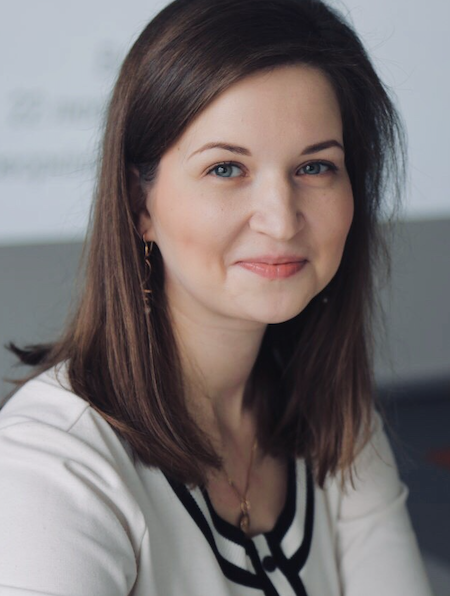
CEO & Founder of The Influencer Platform, a Ukrainian-based organization that trains and unites influencers of all generations who stand for digital rights, equal opportunities, women empowerment, and the open Internet. Currently serving on the SEEDIG Executive Committee and is a founding member of the Internet Freedom Network for Eastern, Central Europe, and Eurasia. Her sphere of interests lies at the intersection of law and technology and includes, inter alia, digital rights, Internet governance, data protection, artificial intelligence, digital sovereignty, and content regulation. She provides consultancy and expert support to Freedom House, Council of Europe and a range of international companies working all over the world.
External Relations Manager | Internet Society Armenia

Lianna Galstyan is the External Relations Manager and a Board member of the Internet Society of Armenia.
She is actively involved in Internet Governance related issues on national, (sub)regional and global level.
Lianna is a MAG member and a Coordinator for the Armenian IGF. Also, she has founded and runs the ArmSIG, Armenian School on Internet Governance and is Vice Chair of ICANN APRALO (Asia-Pacific Regional At-Large Organization).
Independent consultant | Romania (Chair)

Sorina is an independent consultant with expertise in Internet governance and digital policy.
She previously worked with DiploFoundation as Digital Policy Senior Researcher, and with the Romanian Parliament, as advisor dealing with ICT-related legislation and policies. Sorina also served as the alternate representative of the Romanian Government to ICANN’s Governmental Advisory Committee and as a member of the Multistakeholder Advisory Group (MAG) which provides advice to the UN Secretary-General on the programme and schedule of the Internet Governance Forum (IGF) meetings.
Long-time volunteer to the IGF Secretariat and EuroDIG, and former fellow and consultant at the IGF Secretariat. Alumna of DiploFoundation’s Internet Governance Capacity Building Programme, ICANN’s Fellowship Programme, the Internet Society’s Next Generation Leadership programme, and the European Summer School on Internet Governance.
